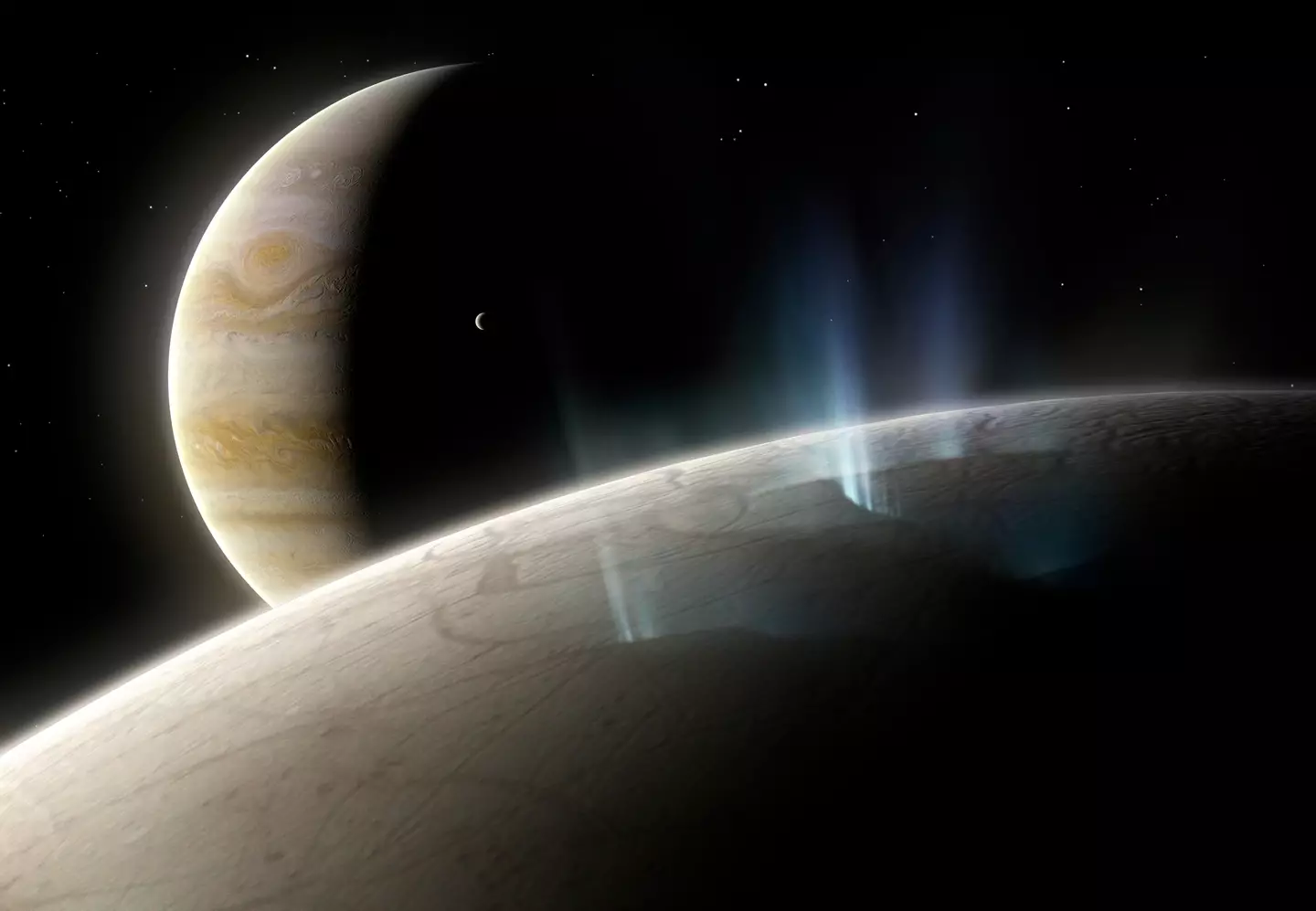
Carbon dioxide, one of the fundamental elements for life, has been spotted on one of Jupiter’s moons which has long been suspected as a likely spot to discover life.
If there is life out there at all in the universe, there are some places that scientists have ear-marked as potential places that it might be found.
The conditions need to be just right, as they are on Earth, if extra-terrestrial life is to thrive, and one such place that might just harbour those conditions is Jupiter’s moon Europa.
Advert
It’s a big icy moon, so there’s plenty going on down there already, but now scientists believe they have also discovered a large amount of carbon dioxide (CO2) ice.
Observations made by the James Webb Space Telescope appear to have revealed that carbon dioxide is present beneath the ice, rather than having been deposited by meteorites.

This has provoked some serious thought amongst scientists about whether Europa could be habitable.
Advert
Geronimo Villanueve, from NASA’s Goddard Space Center, is the lead author of one of two papers about the discovery, and he said in a statement: “On Earth, life likes chemical diversity – the more diversity, the better.
"We’re carbon-based life.
“Understanding the chemistry of Europa’s ocean will help us determine whether it’s hostile to life as we know it, or if it might be a good place for life.”
His sentiments were echoed by Samantha Trumbo, from Cornell University, and the lead author of that second independent paper, who said: “We now think that we have observational evidence that the carbon we see on Europa’s surface came from the ocean. That's not a trivial thing.
Advert
“Carbon is a biologically essential element.”
It’s exciting stuff, that’s for sure.
Explaining why this finding is different to others in the past, Trumbo continued: “Previous observations from the Hubble Space Telescope show evidence for ocean-derived salt in Tara Regio [an area of Europa].
“Now we’re seeing that carbon dioxide is heavily concentrated there as well.
Advert
“We think this implies that the carbon probably has its ultimate origin in the internal ocean.”

Villanueva added: “Scientists are debating how much Europa’s ocean connects to its surface.
“I think that question has been a big driver of Europa exploration.
Advert
“This suggests that we may be able to learn some basic things about the ocean’s composition even before we drill through the ice to get the full picture.”
So, what’s next?
Well, there’s likely to be further investigation of what is going on up on Europa, with future planned missions like the European Space Agency’s JUICE and NASA’s Europa Clipper expected to give greater insight into this fascinating moon.
The findings made here will inform some of the things that these missions will be looking for.
Topics: Space, Science, Technology
